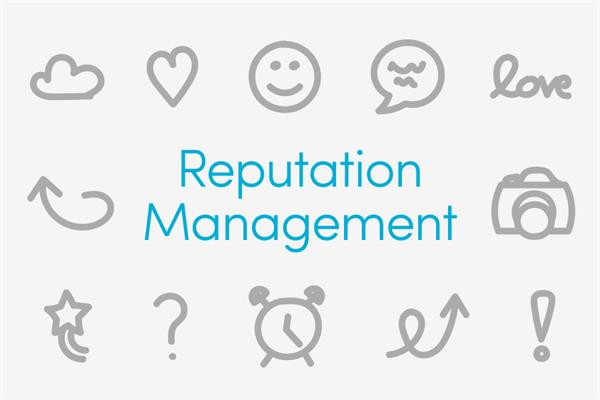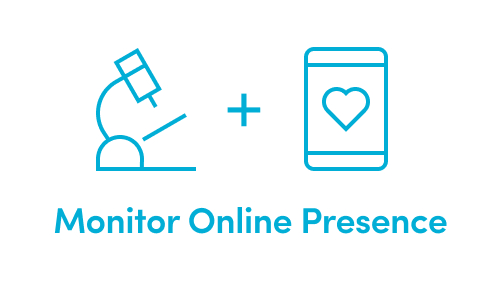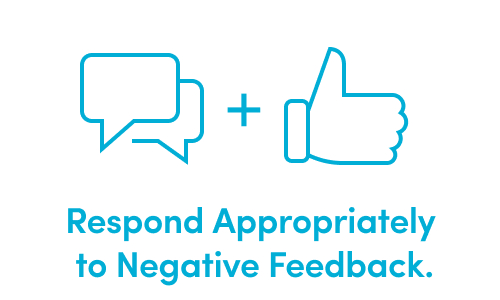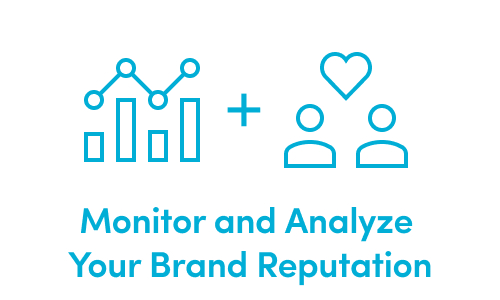In today’s digital world, public perception can turn on a dime. While the explosion of digital marketing and ecommerce has opened countless doors for businesses to grow their brands on both local and global scales, the digital space has also created opportunity for brand reputations to be shared and shifted at a breakneck pace.
A brand’s reputation is crucial to its success and is constantly evolving based on how a company’s values and actions are perceived. To make sure your brand is perceived to be trustworthy, credible, reliable, and responsible, you must continually manage your brand reputation. Brand reputation management is the process of maintaining and improving the perception of a company or organization among its consumers and stakeholders.

The Highs and Lows of Brand Reputation
When a brand’s reputation management is functioning well—that is, the brand is staying true to its identity, connecting with customers, and offering products of value—their reputation can easily flourish.
Modern consumers are often looking to buy from brands that provide personalized customer service, take responsibility to right their wrongs, and support social and environmental best practices in tangible ways. When these needs are met, consumers leave positive reviews and share advantageous testimonials. Brand awareness spreads and the brand’s reputation is strengthened. A positive brand reputation is invaluable to a successful business because a powerful reputation lays the foundation for customer loyalty and increased sales.
The other side of the digital coin, however, is how quickly poor brand reputation management can lead to unhappy customers, under-performing marketing campaigns and decreased revenue. Historically, brand reputation was built from word-of-mouth recommendations between friends and family. But, in the digital age, consumers have access to a vast amount of information at their fingertips, which makes brand reputation a slippery thing to maintain.
Today’s consumers have such easy access to social media and online reviews that 88% of digital shoppers consult online reviews before making a purchase, with one study showing 65% of shoppers using online reviews to make purchase decisions within the week prior to the study.
A brand’s reputation is everything to its success. While positive brand reputation can take months and years to establish, one careless press release, unkind customer interaction, misleading product or mishandled negative review can quickly discredit everything a business has worked so hard to build.
How Your Brand Can Implement Brand Reputation Management
To stop catastrophes before they happen, brands in the digital age can and should actively manage their reputations. Your brand reputation management should have a comprehensive strategy that includes consistent effort and maintenance. To help you best manage your brand’s reputation, media agency (amp) has compiled the following 9 effective strategies to protect and enhance your brand's image.
|
1. Develop and maintain a strong brand identity. This includes your brand’s voice, visual identity, and messaging. A strong brand identity that is tailored to your target audience and consistent across your social media sites and other online platforms will build a reputation of reliability with consumers.
|
 |
|
2. Monitor your online presence across your digital ecosystem. Stay on top of negative comments or reviews that could damage the brand’s reputation by monitoring your social media channels and review sites to see what consumers are saying about your brand. Use tools like Google Alerts to find out when and where your brand or other branded keywords are mentioned online, and then leverage this information to quickly respond to and solve any issues you find.
|
 |
|
3. Respond appropriately to negative feedback. Not only should you always respond to consumer feedback, but you should take special care with negative reviews. Address the customer’s issue or concern directly and offer solutions or alternatives in an empathetic way. An apology for negative experiences and an offer to make things right can go a long way to building your brand’s trustworthiness.
|
 |
|
4. Provide excellent customer service. Customer service is crucial to building a positive brand reputation. Your team should be well-trained, responsive, and attentive to customer needs. This might include addressing logistical delays in delivery or miscommunications with suppliers. Mitigating any problems with respect and empathy can help highlight your brand’s reliability.
|
 |
|
5. Leverage social media to build your brand. Remember that social media is the place to share valuable content and show off your brand’s personality. Leveraging social media not only helps build trust with your customers, but it also generates valuable word-of-mouth marketing for your brand.
|

|
|
6. Value transparency and honesty. Brands that are open about their business practices, products and services are better able to connect with their audience over shared values and beliefs and make them feel good about choosing your brand when purchasing. Avoid repelling consumers by hiding behind PR speech and legal jargon and focus instead on addressing consumer concerns with transparency to build trust in your brand.
|
 |
|
7. Consistently deliver on your brand promises. By ensuring your products and services meet or exceed customer expectations and provide value, you can build a positive brand reputation. Be authentic in your brand messaging and stay true to your values and goals. Brands that consistently highlight their unique strengths and values are much more likely to be perceived as trustworthy and reliable.
|
 |
|
8. Engage with your customers. You can build loyalty and a positive reputation by developing a real relationship with your target audience. Share user-generated content and create fun online opportunities for customers to share their experiences with your products. Respond to comments, share user-generated content, and encourage customers to share their experiences.
|
 |
|
9. Monitor and analyze your brand reputation by regularly identifying areas for improvement. Digital information sharing allows brands to get instant feedback on how changes to products or services are impacting consumers. Use this information to your advantage to make changes that will show your consumers you’re truly listening.
|
 |
Brand reputation management is a vital component of any business strategy. As a media agency, (amp) helps customers maintain their brand reputation with our team of community media managers. (amp) offers community media management services to maintain brand reputation online. If you’d like to learn more about how (amp) can help safeguard your online presence, visit our website today!